Top 10 Eco-Friendly Pest Control Methods for Your Garden
This article explores sustainable and environmentally friendly pest control methods to help maintain a healthy garden while minimizing harm to beneficial insects and the ecosystem. If you're a gardening enthusiast, you know how crucial it is to keep your plants thriving without resorting to harmful chemicals. The good news is that there are plenty of effective, eco-friendly strategies to manage pests while preserving the delicate balance of nature. In this guide, we’ll delve into ten innovative methods that can help you maintain a flourishing garden, all while being kind to our planet.
Utilizing beneficial insects such as ladybugs and lacewings can effectively control pest populations in your garden without the need for harmful chemicals or pesticides. These little heroes feast on common pests like aphids and caterpillars, providing a natural solution to your pest problems. Imagine your garden as a tiny ecosystem where these beneficial insects serve as the knights in shining armor, swooping in to save the day. By encouraging their presence, you not only protect your plants but also foster a thriving environment for other wildlife.
Planting certain species together can naturally deter pests. This method enhances biodiversity and promotes a healthier garden ecosystem while providing natural pest control solutions. For example, planting marigolds alongside vegetables can repel nematodes and other pests. Think of it as a buddy system for your plants! They work together to keep each other safe, all while creating a vibrant and diverse garden space.
These biodegradable soaps target soft-bodied insects like aphids and spider mites, effectively eliminating them without harming beneficial insects or the environment. Organic insecticidal soaps work by suffocating pests upon contact. When you spray these soaps, it’s like giving the pests a bubble bath they never wanted! This method is especially useful for those who want to stick to organic practices while keeping their plants safe.
Derived from the seeds of the neem tree, this natural pesticide disrupts the life cycle of pests and acts as a repellent, making it a versatile option for gardeners. Neem oil is like the Swiss Army knife of pest control—it's effective against a variety of pests and can even help prevent fungal infections. By using neem oil, you're essentially sending a warning signal to pests that your garden is not a place for them to thrive.
A natural powder made from fossilized algae, diatomaceous earth is effective against crawling insects. It works by dehydrating pests upon contact, providing a safe alternative to chemical insecticides. Just sprinkle some around your plants, and watch as it creates a barrier that pests can't cross. It’s like laying down a magical dust that keeps your garden safe from unwanted visitors!
Certain essential oils, like peppermint and lavender, can repel insects when diluted and sprayed in the garden. They provide a fragrant, non-toxic solution for pest management. Imagine walking through your garden, greeted by the soothing scent of lavender, while knowing that pesky insects are being kept at bay. It’s a win-win for your senses and your plants!
Creating traps using household items can effectively catch and reduce pest populations. Simple solutions like beer traps for slugs or soapy water for aphids can be very effective. It’s like setting up a little scavenger hunt for pests—only they’re the ones who end up getting trapped! So, roll up your sleeves and get crafty with some DIY traps that not only save your plants but also add a touch of creativity to your gardening routine.
Using row covers, nets, or barriers can prevent pests from reaching your plants while allowing sunlight and moisture to penetrate, ensuring a healthy growing environment. Think of these barriers as protective shields that keep your plants safe from harm. They’re an essential part of any eco-friendly pest control strategy, allowing you to nurture your garden without the fear of pests invading.
Maintaining a clean garden by removing debris, dead plants, and weeds can significantly reduce pest habitats, making it an essential practice for effective eco-friendly pest control. A tidy garden is less inviting to pests, and regular upkeep is like giving your plants a spa day. They’ll thank you by growing stronger and more resilient, making it harder for pests to take hold.
Q: Are eco-friendly methods as effective as chemical pesticides?
A: Absolutely! Many eco-friendly methods can be just as effective, if not more so, than chemical pesticides, especially when used in combination.
Q: How do I attract beneficial insects to my garden?
A: You can attract beneficial insects by planting a variety of flowers, providing water sources, and avoiding chemical pesticides that harm them.
Q: Can I use these methods in a vegetable garden?
A: Yes! All of these methods are safe for use in vegetable gardens and can help you grow healthy, chemical-free produce.
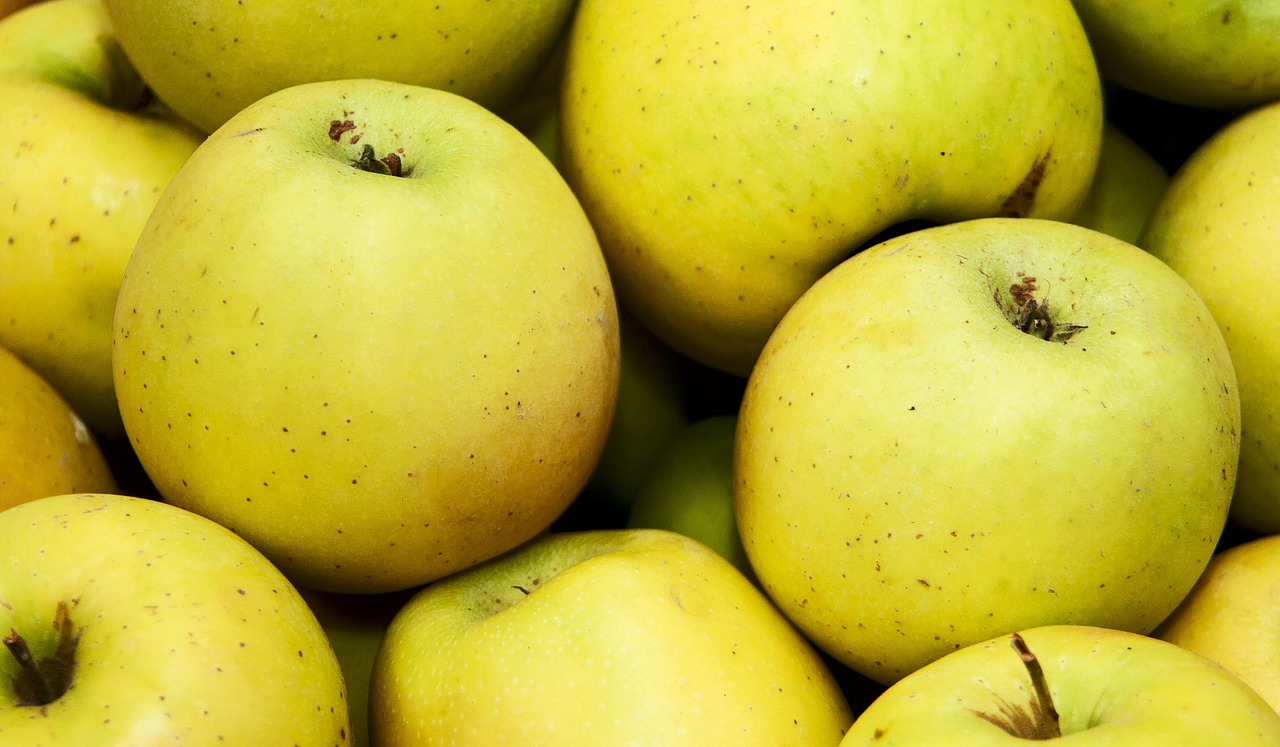
1. Natural Predators
This article explores sustainable and environmentally friendly pest control methods to help maintain a healthy garden while minimizing harm to beneficial insects and the ecosystem.
When it comes to keeping your garden healthy, natural predators are your best friends! Imagine your garden as a bustling city where every insect plays a role. Just like in a city, some residents can become nuisances. That's where natural predators swoop in to restore balance. Beneficial insects such as ladybugs, lacewings, and even certain birds can help control pest populations without the need for harmful chemicals. These little heroes are nature's way of maintaining equilibrium, and they do so in a way that is not only effective but also environmentally friendly.
For instance, ladybugs are voracious eaters of aphids, one of the most common pests found in gardens. A single ladybug can consume up to 5,000 aphids in its lifetime! Similarly, lacewings are known for their appetite for soft-bodied insects, making them another valuable asset in your pest control arsenal. By introducing or encouraging these natural predators in your garden, you create a self-sustaining ecosystem that reduces the need for chemical interventions.
But how do you attract these beneficial insects? Here are some tips:
- Plant Diversity: Incorporate a variety of plants, including flowers that attract beneficial insects, such as marigolds and sunflowers.
- Provide Shelter: Create habitats with native plants and avoid excessive use of pesticides, which can harm these helpful creatures.
- Water Sources: A small water feature or shallow dishes filled with water can provide hydration for your garden's insect allies.
Moreover, it's essential to understand the life cycles of these natural predators. For example, ladybugs start as larvae, which are also effective at consuming pests. By allowing these insects to thrive, you not only control the pest population but also promote biodiversity in your garden. This approach is akin to having a well-trained team of specialists who know exactly how to tackle the challenges that arise in your green space.
In conclusion, utilizing natural predators is not just a method of pest control; it's an invitation to create a harmonious environment where plants and insects coexist. By fostering these relationships, you can enjoy a thriving garden that flourishes without the detrimental effects of synthetic chemicals. So, why not embrace the power of nature and let these tiny guardians do their magic?
Q: How can I introduce natural predators to my garden?
A: You can purchase beneficial insects from garden centers or online retailers. Alternatively, you can plant specific flowers to attract them naturally.
Q: Will natural predators harm my plants?
A: No, natural predators primarily feed on pests and are harmless to your plants. In fact, they help keep your plants healthy!
Q: How do I know if I have enough natural predators in my garden?
A: Monitor pest populations. If you notice a decline in pests, it’s a good sign that natural predators are doing their job!
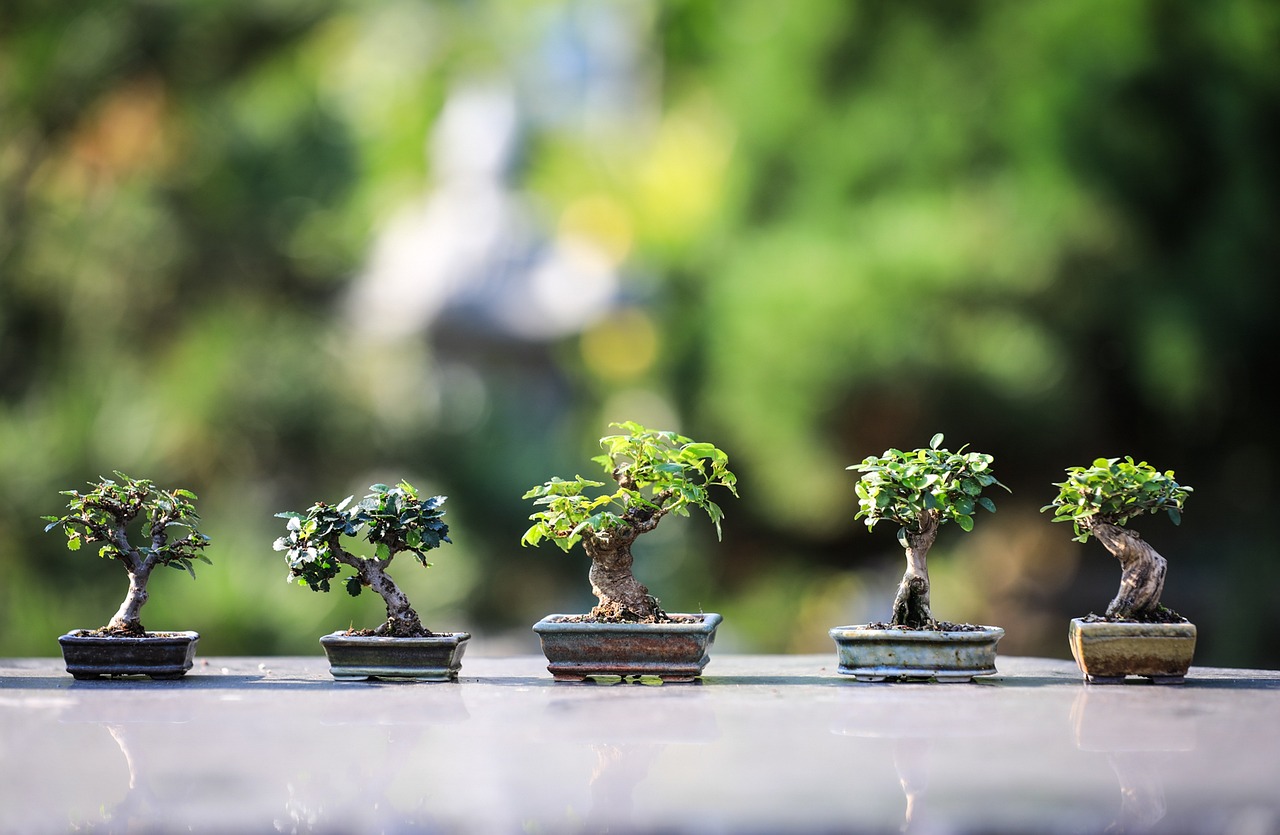
2. Companion Planting
Companion planting is an age-old gardening technique that not only enhances the beauty of your garden but also serves as a powerful method for natural pest control. Imagine your garden as a community where each plant plays a unique role, much like different members of a family working together to create harmony. By strategically placing certain plants in proximity to others, you can create a symbiotic relationship that repels unwanted pests while promoting healthy growth.
For instance, planting marigolds alongside vegetables like tomatoes can deter nematodes and other harmful insects. The vibrant marigold flowers release compounds that act as a natural insect repellent, creating a protective barrier around your precious tomatoes. Similarly, basil is known to repel flies and mosquitoes, making it an excellent companion for your garden's tomato plants. This not only keeps pests at bay but also enhances the flavor of the tomatoes!
Additionally, companion planting fosters biodiversity, which is crucial for maintaining a healthy ecosystem in your garden. When you plant a variety of species together, you create a diverse habitat that attracts beneficial insects, such as pollinators and predatory insects, which can help control pest populations naturally. For example, planting nasturtiums can draw aphids away from your more vulnerable plants, effectively acting as a trap crop. This not only protects your main crops but also adds a splash of color to your garden.
To help you get started with companion planting, here’s a simple table that outlines some effective plant pairings:
| Plant | Companion Plant | Benefits |
|---|---|---|
| Tomatoes | Basil | Repels flies and enhances flavor |
| Carrots | Onions | Repels carrot flies |
| Cabbage | Mint | Repels cabbage moths |
| Beans | Corn | Beans fix nitrogen in the soil, benefiting corn |
| Marigolds | Vegetables | Repels nematodes and other pests |
In conclusion, companion planting is not just about aesthetics; it’s a holistic approach to pest management that embraces nature’s own methods. By choosing the right plant combinations, you can create a flourishing garden that thrives on its own, reducing the need for synthetic pesticides. So why not give it a try? Your garden will thank you with vibrant growth and a bountiful harvest!
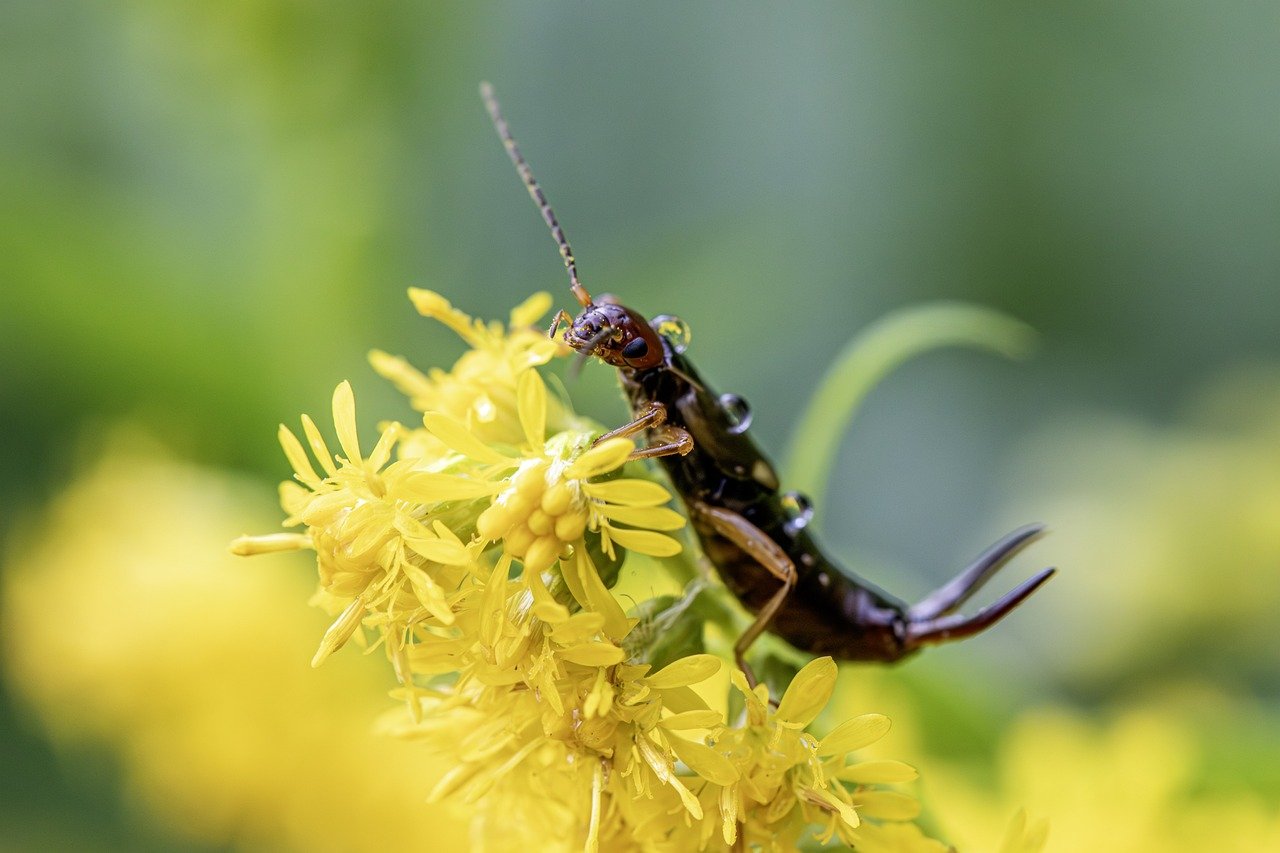
3. Organic Insecticidal Soaps
When it comes to keeping your garden healthy and thriving, organic insecticidal soaps are a gardener's best friend. These biodegradable soaps are specially formulated to target soft-bodied insects, such as aphids, spider mites, and whiteflies, which can wreak havoc on your plants. The beauty of organic insecticidal soaps lies in their ability to effectively eliminate these pests without causing harm to beneficial insects like bees and ladybugs. Imagine a gentle rain washing away the bad while leaving the good behind—this is what organic insecticidal soaps do for your garden!
So, how do these soaps work? Well, they contain natural oils and fats that disrupt the cell membranes of the pests upon contact, leading to dehydration and ultimately, death. This means you can say goodbye to chemical-laden pesticides that not only harm pests but also threaten the delicate balance of your garden's ecosystem. Using organic insecticidal soaps is like inviting a friendly neighbor over to help you with a pest problem—safe, effective, and environmentally responsible!
To use organic insecticidal soaps effectively, it's important to follow a few simple guidelines:
- Timing is Key: Apply the soap during early morning or late afternoon when temperatures are cooler to prevent plant damage.
- Coverage Matters: Ensure thorough coverage of the affected plants, as the soap needs to come into direct contact with the pests.
- Reapply as Needed: Depending on the severity of the infestation, you may need to reapply the soap every few days until the pests are under control.
One of the best things about organic insecticidal soaps is that they are easy to make at home! You can create your own mixture using simple ingredients found in your kitchen. Here’s a quick recipe:
| Ingredients | Measurements |
|---|---|
| Liquid Castile Soap | 1-2 tablespoons |
| Water | 1 quart (4 cups) |
Mix the liquid Castile soap with water in a spray bottle, shake gently, and voila! You have your very own organic insecticidal soap ready to combat those pesky pests. Remember to always test a small area of your plants before applying it widely, just to ensure they don’t have any adverse reactions.
In conclusion, organic insecticidal soaps offer a sustainable and effective method for managing pest populations in your garden. By choosing this eco-friendly alternative, you not only protect your plants but also contribute to a healthier environment. So, the next time you spot some unwanted guests in your garden, reach for that bottle of organic insecticidal soap and let nature do the rest!
Q: Are organic insecticidal soaps safe for all plants?
A: While most plants tolerate organic insecticidal soaps well, it’s always wise to test a small area first. Some delicate plants may react negatively.
Q: How often should I apply organic insecticidal soap?
A: It depends on the severity of the pest problem. Generally, reapplying every 3-7 days is effective until you see an improvement.
Q: Can I use organic insecticidal soap on edible plants?
A: Yes! Organic insecticidal soaps are safe for use on edible plants. Just ensure you wash the produce thoroughly before consumption.
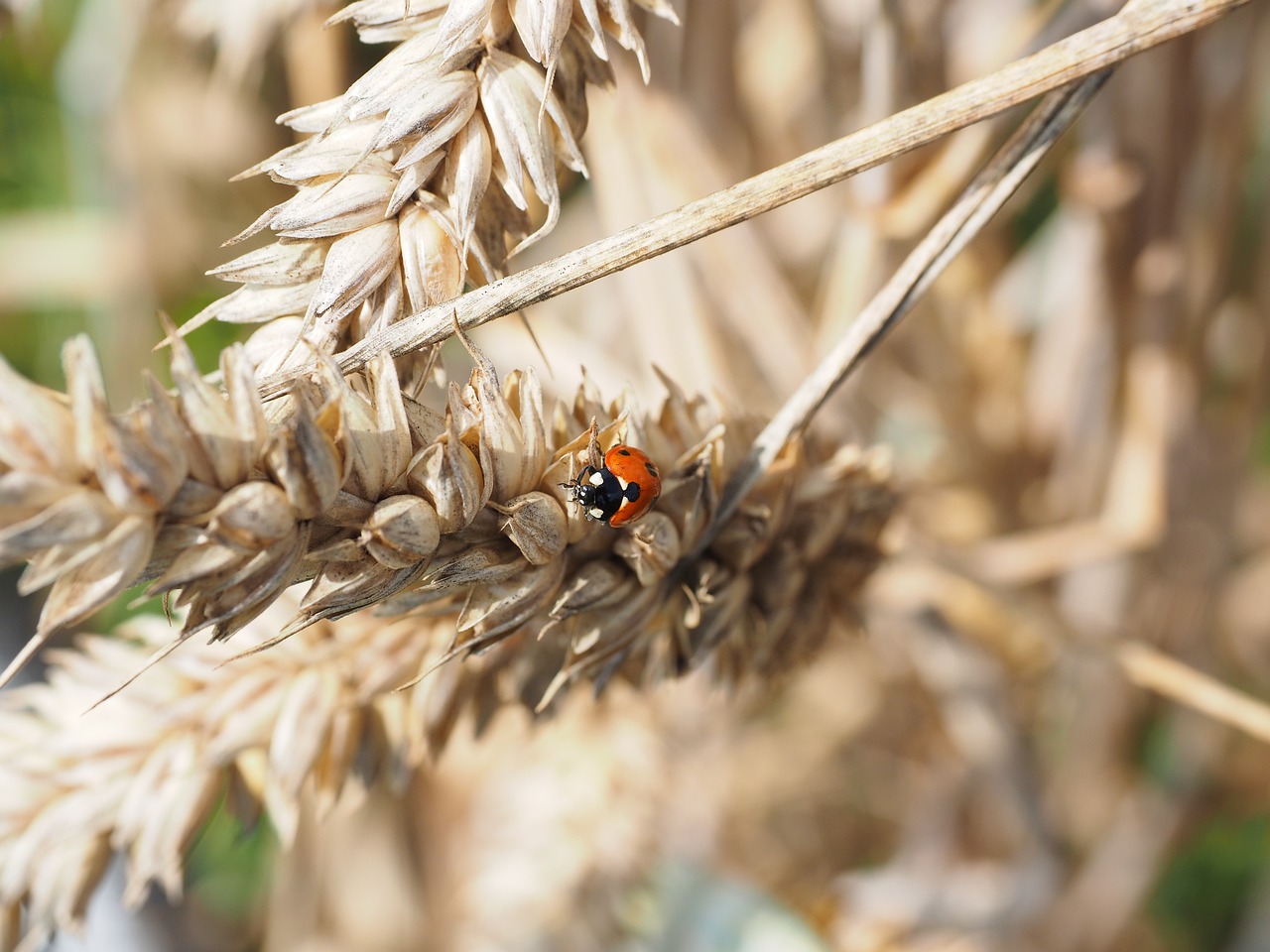
4. Neem Oil
Utilizing beneficial insects such as ladybugs and lacewings can effectively control pest populations in your garden without the need for harmful chemicals or pesticides.
Planting certain species together can naturally deter pests. This method enhances biodiversity and promotes a healthier garden ecosystem while providing natural pest control solutions.
These biodegradable soaps target soft-bodied insects like aphids and spider mites, effectively eliminating them without harming beneficial insects or the environment.
Neem oil is a remarkable natural pesticide derived from the seeds of the neem tree, native to the Indian subcontinent. This oil has been used for centuries in traditional medicine and agriculture, and it is gaining popularity in modern organic gardening due to its multifaceted benefits. When applied to plants, neem oil disrupts the life cycle of various pests, including aphids, whiteflies, and spider mites, making it a versatile option for gardeners. The active compounds in neem oil, such as azadirachtin, work by interfering with the pests' ability to feed and reproduce, effectively reducing their populations over time.
Moreover, neem oil serves as a repellent, deterring pests from approaching your plants in the first place. This dual action makes it an essential tool in your eco-friendly pest control arsenal. To use neem oil, simply dilute it with water according to the instructions on the product label, and add a few drops of mild liquid soap to help it mix. Spray this solution on the affected plants, ensuring to coat the undersides of leaves where pests often hide.
It's important to note that while neem oil is safe for beneficial insects, it's best to apply it in the evening or early morning when pollinators are less active, to avoid any unintended harm. Additionally, regular applications may be necessary, especially after rainfall, to maintain its effectiveness. The beauty of neem oil lies not only in its potency against pests but also in its minimal impact on the environment, making it a favorite among organic gardeners.
A natural powder made from fossilized algae, diatomaceous earth is effective against crawling insects. It works by dehydrating pests upon contact, providing a safe alternative to chemical insecticides.
Certain essential oils, like peppermint and lavender, can repel insects when diluted and sprayed in the garden. They provide a fragrant, non-toxic solution for pest management.
Creating traps using household items can effectively catch and reduce pest populations. Simple solutions like beer traps for slugs or soapy water for aphids can be very effective.
Using row covers, nets, or barriers can prevent pests from reaching your plants while allowing sunlight and moisture to penetrate, ensuring a healthy growing environment.
Maintaining a clean garden by removing debris, dead plants, and weeds can significantly reduce pest habitats, making it an essential practice for effective eco-friendly pest control.
1. How often should I apply neem oil?
It's recommended to apply neem oil every 7-14 days, especially after rain, to maintain its effectiveness against pests.
2. Is neem oil safe for my pets?
Yes, neem oil is generally safe for pets when used as directed. However, it's always best to keep pets away from treated areas until the oil has dried.
3. Can neem oil harm beneficial insects?
Neem oil has minimal impact on beneficial insects when applied correctly, particularly if used during times when pollinators are less active.
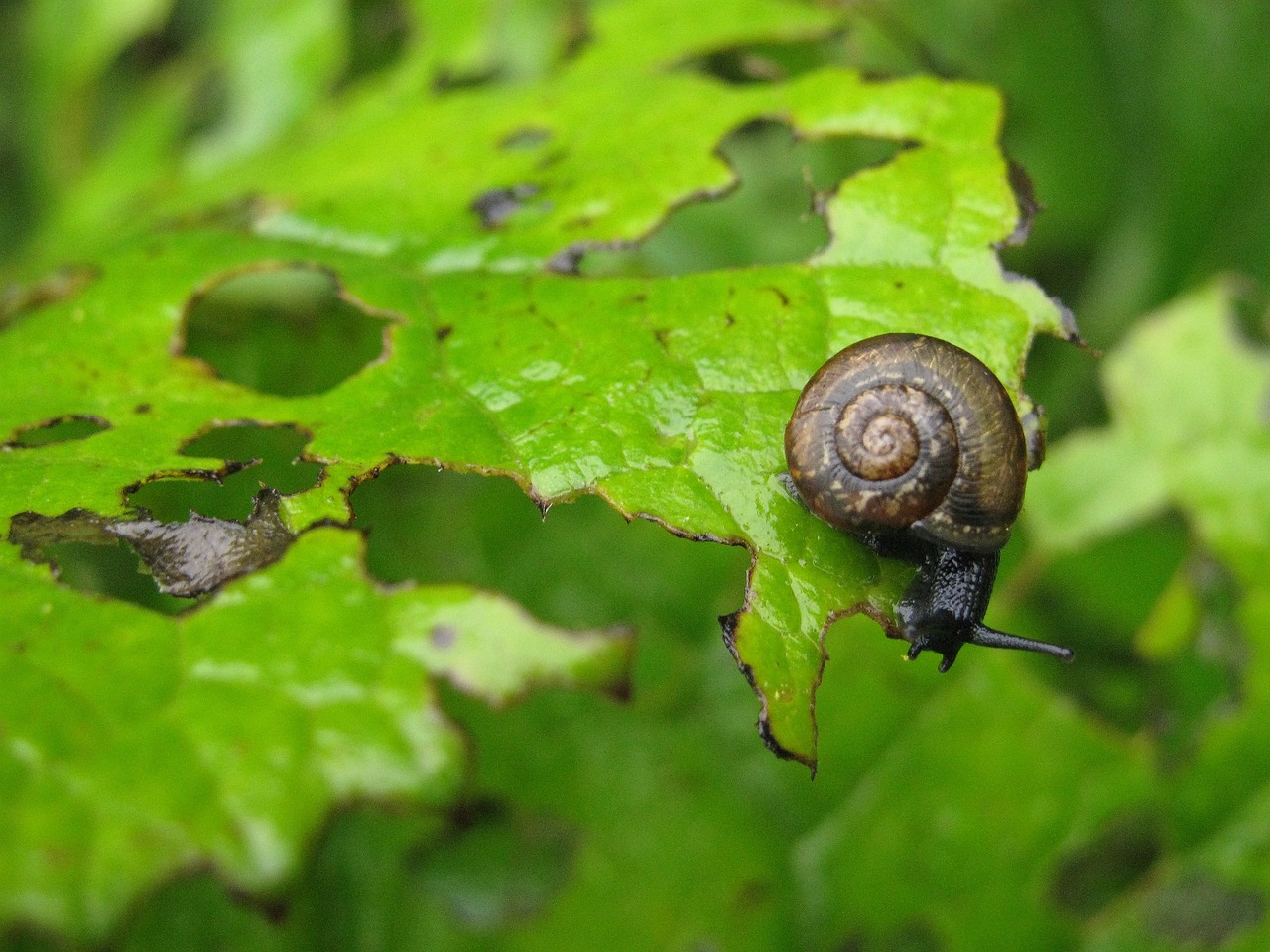
5. Diatomaceous Earth
Diatomaceous earth (DE) is a remarkable and versatile pest control option that many gardeners are turning to as a natural remedy. This fine, powdery substance is made from the fossilized remains of tiny aquatic organisms called diatoms. What makes it so effective against pests? Well, when insects come into contact with DE, it acts like tiny shards of glass that cut through their exoskeletons, leading to dehydration and, ultimately, their demise. It's an ingenious solution that allows you to protect your garden without resorting to harmful chemicals.
One of the best things about diatomaceous earth is its safety for humans, pets, and beneficial insects. Unlike conventional pesticides that can linger in the environment and harm non-target species, DE is completely natural and breaks down over time. This means you can apply it with peace of mind, knowing that you are not endangering the delicate balance of your garden ecosystem. However, it's important to use food-grade diatomaceous earth, as some industrial grades may contain additives that are not safe for use in gardens.
When applying diatomaceous earth, timing is crucial. For optimal results, you should sprinkle it in areas where you've noticed pest activity, particularly around the base of plants or along garden paths. It's best to apply it in dry conditions, as moisture can reduce its effectiveness. After a rain or watering, a reapplication may be necessary to maintain its pest-fighting power. Just remember to wear a mask during application to avoid inhaling the fine particles, as they can irritate your lungs.
In terms of effectiveness, diatomaceous earth is particularly useful against a range of crawling insects, including:
- Ants
- Roaches
- Fleas
- Bed bugs
- Spider mites
It's also worth noting that diatomaceous earth can serve a dual purpose in your garden. Not only does it help control pest populations, but it can also improve soil quality. When mixed into the soil, DE can enhance aeration and water retention, creating a healthier environment for your plants to thrive. This means that by using diatomaceous earth, you're not just fighting pests; you're also boosting the overall health of your garden!
In conclusion, diatomaceous earth is a powerful ally for any eco-conscious gardener. Its natural composition, effectiveness against a wide range of pests, and additional benefits for soil health make it a must-have in your gardening toolkit. So, the next time you find yourself battling unwelcome garden guests, consider reaching for this remarkable powder as your first line of defense.
Q1: Is diatomaceous earth safe for pets and children?
A1: Yes, food-grade diatomaceous earth is safe for both pets and children. However, avoid inhaling the powder during application.
Q2: How often should I apply diatomaceous earth?
A2: It’s best to reapply diatomaceous earth after rain or watering, as moisture can reduce its effectiveness.
Q3: Can I use diatomaceous earth indoors?
A3: Absolutely! Diatomaceous earth is effective for indoor pest control as well, particularly for crawling insects.
Q4: How does diatomaceous earth work against pests?
A4: DE works by damaging the exoskeletons of insects, leading to dehydration and death when they come into contact with it.
Q5: Will diatomaceous earth harm beneficial insects?
A5: When used correctly, diatomaceous earth is less harmful to beneficial insects, especially if applied selectively and not in areas where they are active.

6. Essential Oils
When it comes to pest control, essential oils are like nature's secret weapon. These concentrated plant extracts are not only fragrant but also possess powerful properties that can repel a variety of garden pests. Imagine walking through your garden and being greeted by the delightful scents of peppermint or lavender, all while knowing that these same aromas are keeping unwanted insects at bay. Isn't that a win-win?
Essential oils work by disrupting the sensory receptors of pests, making it difficult for them to locate their food sources. For example, peppermint oil is known to repel ants, spiders, and even mosquitoes, while lavender oil can deter moths and fleas. The beauty of using essential oils lies in their versatility; they can be used in various ways, such as sprays, diffusers, or even mixed into your garden soil.
To create your own pest-repelling spray, you can follow this simple recipe:
Ingredients: - 2 cups of water - 10-15 drops of essential oil (peppermint, lavender, or tea tree oil) - A few drops of dish soap (to help the oil mix with water) Instructions: 1. Combine all ingredients in a spray bottle. 2. Shake well before each use. 3. Spray directly onto plants, focusing on areas where pests are commonly found.
It's important to note that while essential oils are effective, they should be used with care. Always dilute them properly, as concentrated oils can be too strong for some plants. Additionally, it's wise to test a small area of your plants before applying the spray broadly. This precaution helps ensure that your plants won't have an adverse reaction.
Incorporating essential oils into your garden care routine not only promotes a healthier environment but also adds a sensory delight to your gardening experience. Just imagine the invigorating smell of peppermint wafting through the air as you tend to your plants, knowing you're also protecting them from pests. It's like giving your garden a spa day!
As you explore the world of essential oils, consider the following popular options and their pest-repelling properties:
| Essential Oil | Pests Repelled |
|---|---|
| Peppermint Oil | Ants, Spiders, Mosquitoes |
| Lavender Oil | Moths, Fleas, Beetles |
| Tea Tree Oil | Aphids, Whiteflies, Fungi |
| Citronella Oil | Mosquitoes, Flies, Ants |
In conclusion, essential oils are not just a trend; they are a practical, eco-friendly solution for pest control in your garden. By harnessing the power of these natural extracts, you can maintain a healthy garden while minimizing your impact on the environment. So, why not give it a try? Your plants—and your nose—will thank you!
Q: Are essential oils safe for all plants?
A: While many plants tolerate essential oils well, some may be sensitive. Always test a small area before widespread application.
Q: How often should I apply essential oil sprays?
A: Reapply every 1-2 weeks or after heavy rain, as the effectiveness may diminish over time.
Q: Can I mix different essential oils?
A: Yes! Mixing oils can enhance their pest-repelling properties, but ensure they complement each other in terms of scent and effectiveness.
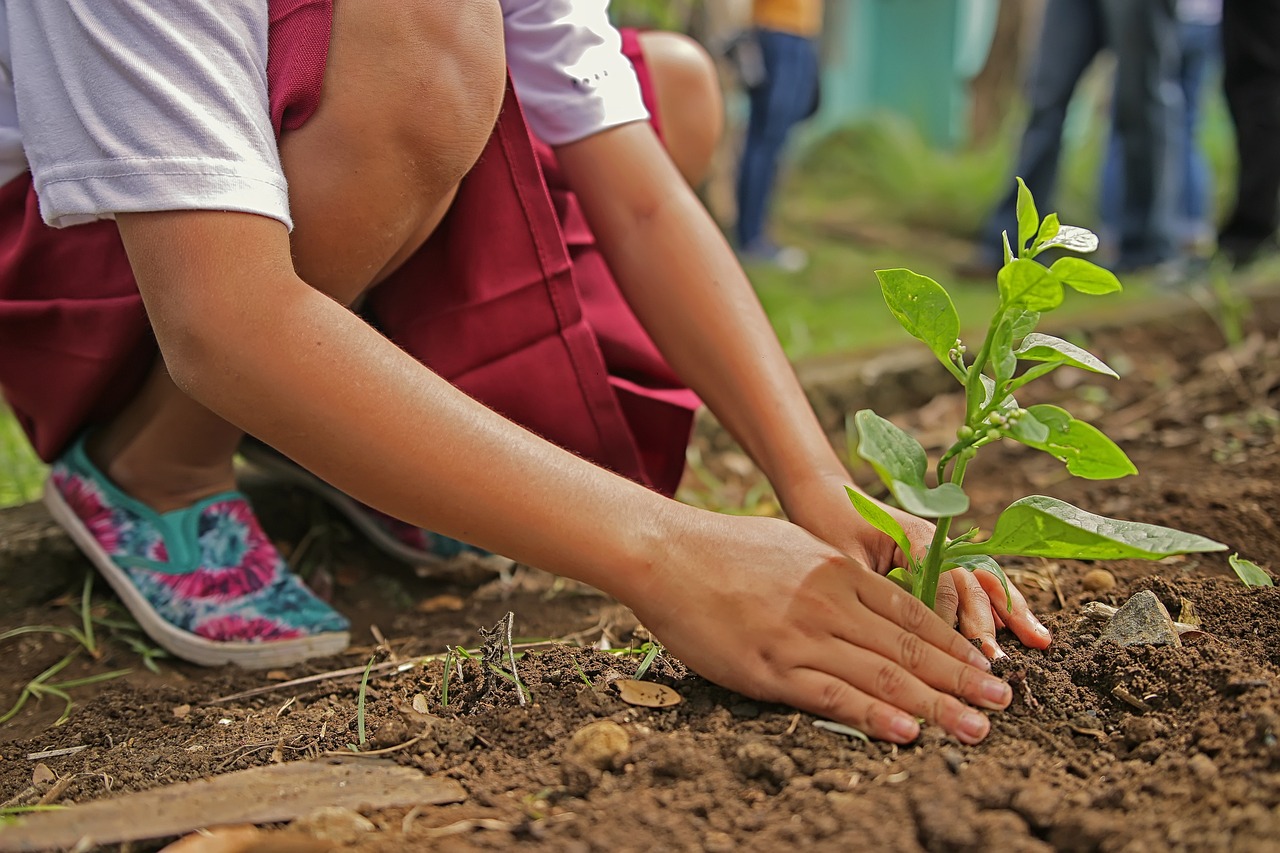
7. Homemade Traps
When it comes to pest control, sometimes the simplest solutions are the most effective. Homemade traps are a fantastic way to manage unwanted pests in your garden without resorting to harsh chemicals. Imagine crafting a trap using items you already have around your home—it's not only cost-effective but also a fun DIY project! The beauty of homemade traps lies in their versatility; you can tailor them to target specific pests while keeping your garden safe for beneficial insects.
For instance, one popular trap among gardeners is the beer trap for slugs. Simply bury a container, like a small bowl or jar, in the soil so that the rim is level with the ground. Fill it with beer, and the slugs will be irresistibly drawn to it. Once they fall in, they won’t be able to escape. This method is not only effective but also an amusing way to utilize leftover beer. Just remember to check the trap regularly and dispose of the slugs humanely.
Another effective homemade trap is the soapy water trap for aphids. By mixing water with a few drops of dish soap in a spray bottle, you create a solution that suffocates these pesky insects upon contact. Just spray it directly onto the affected plants, and watch as the aphids disappear. This method is not only easy to implement but also ensures that you’re using a solution that’s safe for the environment.
Here’s a quick overview of some homemade traps you can easily create:
| Trap Type | Target Pest | Instructions |
|---|---|---|
| Beer Trap | Slugs | Bury a container in the soil and fill it with beer. |
| Soapy Water Trap | Aphids | Mix water with dish soap and spray directly on plants. |
| Fruit Trap | Fruit Flies | Place overripe fruit in a jar with a funnel on top. |
Additionally, you can get creative with traps for other pests. For example, a simple sticky trap can be made using a piece of cardboard coated with a sticky substance like glue or honey. Hang these around your garden, and they’ll catch flying insects that are drawn to the scent. The key is to monitor these traps regularly and replace them as needed to ensure they remain effective.
In conclusion, homemade traps not only provide a practical solution for pest control but also engage you in the process of maintaining your garden. They allow you to take control of your garden’s health while being environmentally friendly. So, roll up your sleeves, gather some supplies, and start crafting your own pest traps. Your garden will thank you!
Q: Are homemade traps safe for pets and children?
A: Yes, most homemade traps use common household items that are safe for pets and children, but it's always good to keep an eye on them to ensure they don’t get into anything they shouldn’t.
Q: How often should I check my homemade traps?
A: It’s recommended to check your traps at least once a week to monitor their effectiveness and replace any that are full or no longer functional.
Q: Can I use homemade traps in combination with other pest control methods?
A: Absolutely! Homemade traps can complement other eco-friendly pest control methods, enhancing your overall garden health.

8. Physical Barriers
When it comes to protecting your garden from pesky invaders, physical barriers can be your best friend. Imagine your garden as a fortress, where every plant is a precious gem that needs to be safeguarded. Using physical barriers not only keeps harmful pests at bay but also allows your plants to bask in the sunlight and soak up moisture. It's like giving your plants a cozy blanket while keeping the unwanted guests outside!
There are various types of barriers you can implement, each serving a unique purpose in your garden's defense strategy. For instance, row covers are lightweight fabrics that can be draped over your plants. They create a protective shield against insects while still allowing air and light to penetrate. Think of them as a sun hat for your plants—keeping them cool and protected from the harsh rays of the sun while preventing pests from getting too close.
Nets are another excellent option, especially for protecting fruit-bearing plants. They act like a netting fence, keeping birds and larger pests away while letting in the sunshine. If you’ve ever seen a bird eyeing your ripe strawberries, you know just how crucial this barrier can be!
Additionally, you can use fencing to deter larger animals like rabbits or deer. A simple fence can be a game-changer, creating a physical boundary that these creatures can't easily cross. Just make sure it's tall enough and buried a bit underground to prevent burrowing. You wouldn't want a determined rabbit to dig its way into your garden!
To further enhance your pest control efforts, consider combining these barriers with other eco-friendly methods. For example, using companion planting alongside your physical barriers can create a more robust defense system. By planting certain flowers that repel pests near your crops, you can fortify your garden even more.
In summary, physical barriers are an essential component of an eco-friendly pest control strategy. They not only protect your plants but also promote a healthier garden ecosystem. So, whether you choose row covers, nets, or fences, remember that these simple solutions can make a world of difference in keeping your garden thriving!
- What are the best materials for physical barriers?
Common materials include lightweight fabrics for row covers, mesh nets for fruits, and wooden or metal fencing for larger animals.
- Can I use physical barriers all year round?
Yes, many barriers can be used year-round, but it's important to remove them during the growing season to allow for pollination.
- Are physical barriers safe for beneficial insects?
Absolutely! Most physical barriers allow beneficial insects like bees to access your plants while keeping harmful pests out.
- How do I maintain my physical barriers?
Regularly check for holes or wear and tear, and clean them to prevent the buildup of pests or diseases.
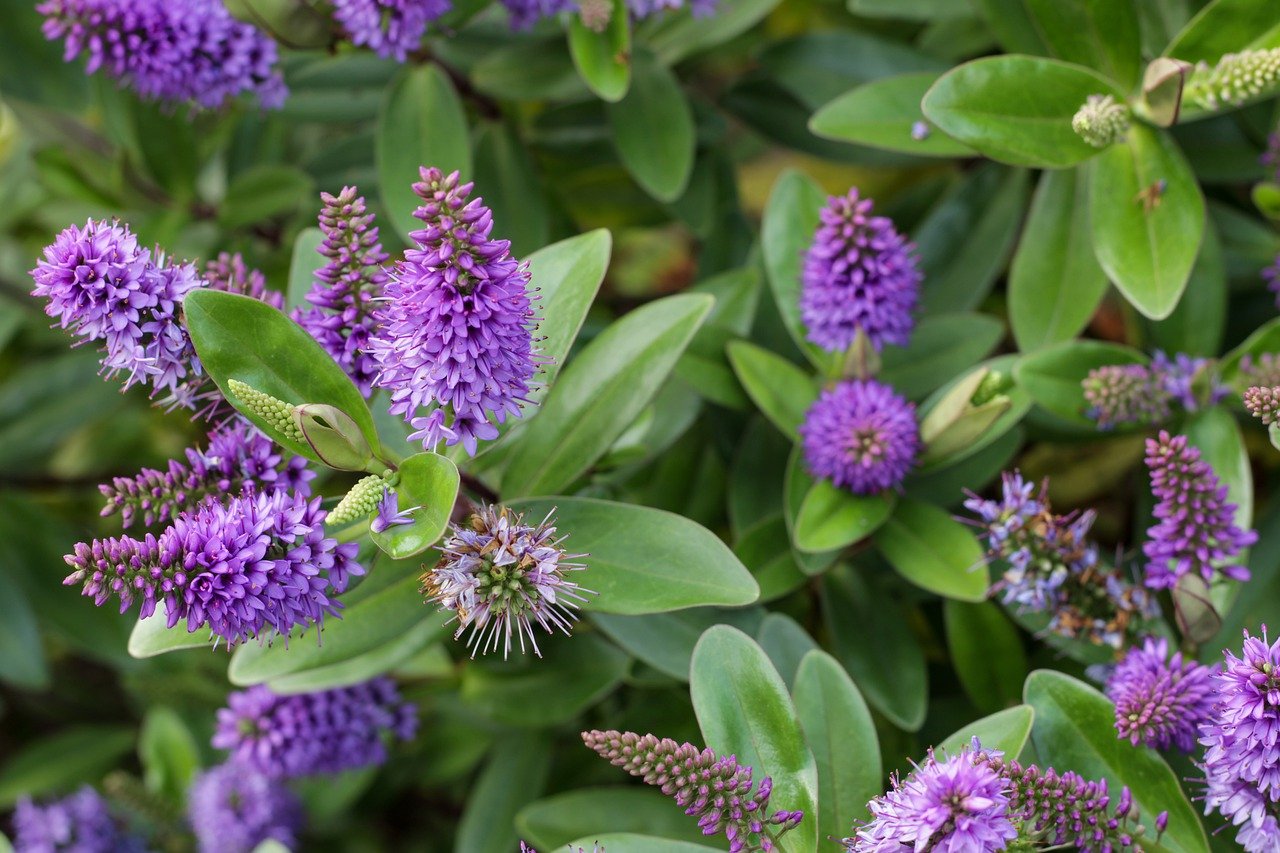
9. Regular Maintenance
Utilizing beneficial insects such as ladybugs and lacewings can effectively control pest populations in your garden without the need for harmful chemicals or pesticides.
Planting certain species together can naturally deter pests. This method enhances biodiversity and promotes a healthier garden ecosystem while providing natural pest control solutions.
These biodegradable soaps target soft-bodied insects like aphids and spider mites, effectively eliminating them without harming beneficial insects or the environment.
Derived from the seeds of the neem tree, this natural pesticide disrupts the life cycle of pests and acts as a repellent, making it a versatile option for gardeners.
A natural powder made from fossilized algae, diatomaceous earth is effective against crawling insects. It works by dehydrating pests upon contact, providing a safe alternative to chemical insecticides.
Certain essential oils, like peppermint and lavender, can repel insects when diluted and sprayed in the garden. They provide a fragrant, non-toxic solution for pest management.
Creating traps using household items can effectively catch and reduce pest populations. Simple solutions like beer traps for slugs or soapy water for aphids can be very effective.
Using row covers, nets, or barriers can prevent pests from reaching your plants while allowing sunlight and moisture to penetrate, ensuring a healthy growing environment.
Maintaining a clean garden is crucial for effective eco-friendly pest control. Regular maintenance not only keeps your garden looking its best but also significantly reduces pest habitats. Think of your garden as a living organism; just like we need to keep our homes tidy to prevent unwanted visitors, your garden requires the same attention. By removing debris, dead plants, and weeds, you create an environment that is less inviting to pests.
Consider these essential practices for regular garden maintenance:
- Remove Debris: Fallen leaves, broken branches, and other organic matter can harbor pests. Clear them away regularly.
- Weed Control: Weeds compete for nutrients and can attract pests. Regularly pulling weeds helps maintain a healthy ecosystem.
- Inspect Plants: Regularly check your plants for signs of pest infestations or diseases. Early detection can prevent larger problems.
- Rotate Crops: Changing the location of your plants each season can disrupt pest life cycles and reduce infestations.
By incorporating these practices into your gardening routine, you not only promote a healthier environment for your plants but also establish a natural balance that minimizes pest issues. Think of it as nurturing a friendship; the more care you give, the stronger and more resilient your garden becomes against pests.
Q: How often should I maintain my garden?
A: Regular maintenance is best done weekly, but daily checks for pests and debris can greatly enhance your garden's health.
Q: Can I use chemical pesticides if my garden is infested?
A: While chemical pesticides can be effective, they may harm beneficial insects. It's best to try eco-friendly methods first.
Q: What are some signs of pest infestations?
A: Look for holes in leaves, sticky residue, or visible insects. Yellowing leaves can also indicate stress from pests.
Frequently Asked Questions
- What are natural predators and how do they help in pest control?
Natural predators like ladybugs and lacewings are beneficial insects that feast on common garden pests such as aphids and caterpillars. By introducing these friendly bugs into your garden, you create a natural balance, reducing the need for chemical pesticides. It's like having tiny bodyguards for your plants, keeping them safe from harm!
- How does companion planting work?
Companion planting involves growing specific plants together to naturally deter pests. For example, planting marigolds alongside vegetables can repel nematodes and other harmful insects. This method not only promotes biodiversity but also enhances soil health, creating a thriving ecosystem in your garden.
- Are organic insecticidal soaps safe for my garden?
Absolutely! Organic insecticidal soaps are biodegradable and specifically target soft-bodied insects like aphids and spider mites. They work by suffocating these pests without harming beneficial insects or the environment. Think of them as a gentle but effective cleansing solution for your plants!
- What is neem oil and how does it function?
Neem oil is derived from the seeds of the neem tree and acts as a natural pesticide. It disrupts the life cycle of pests and serves as a repellent. This means it not only kills existing pests but also prevents new ones from invading your garden. It's like having a multi-tasking superhero on your gardening team!
- How does diatomaceous earth work against pests?
Diatomaceous earth is a natural powder made from fossilized algae. When pests come into contact with it, the powder dehydrates them, effectively eliminating the threat. It’s a safe and non-toxic alternative to chemical insecticides, making it a great choice for eco-conscious gardeners.
- Can essential oils really repel insects?
Yes! Certain essential oils, such as peppermint and lavender, can repel insects when diluted and sprayed in your garden. Not only do they provide a pleasant aroma, but they also offer a non-toxic solution for managing pests. It’s like giving your garden a fragrant shield!
- What are some examples of homemade traps for pests?
Homemade traps can be incredibly effective and easy to make! For instance, a simple beer trap can attract and drown slugs, while soapy water can trap aphids. These DIY solutions are not only cost-effective but also allow you to use items you already have at home.
- How do physical barriers protect my plants?
Physical barriers like row covers and nets can prevent pests from reaching your plants while still allowing sunlight and moisture to penetrate. This method is a straightforward way to safeguard your garden without introducing any chemicals, ensuring your plants grow healthy and strong.
- Why is regular maintenance important for pest control?
Regular maintenance in your garden, such as removing debris and dead plants, significantly reduces pest habitats. Keeping your garden tidy makes it less attractive to pests, essentially cutting off their home base. Think of it as a clean-up crew that keeps your garden safe and thriving!



















